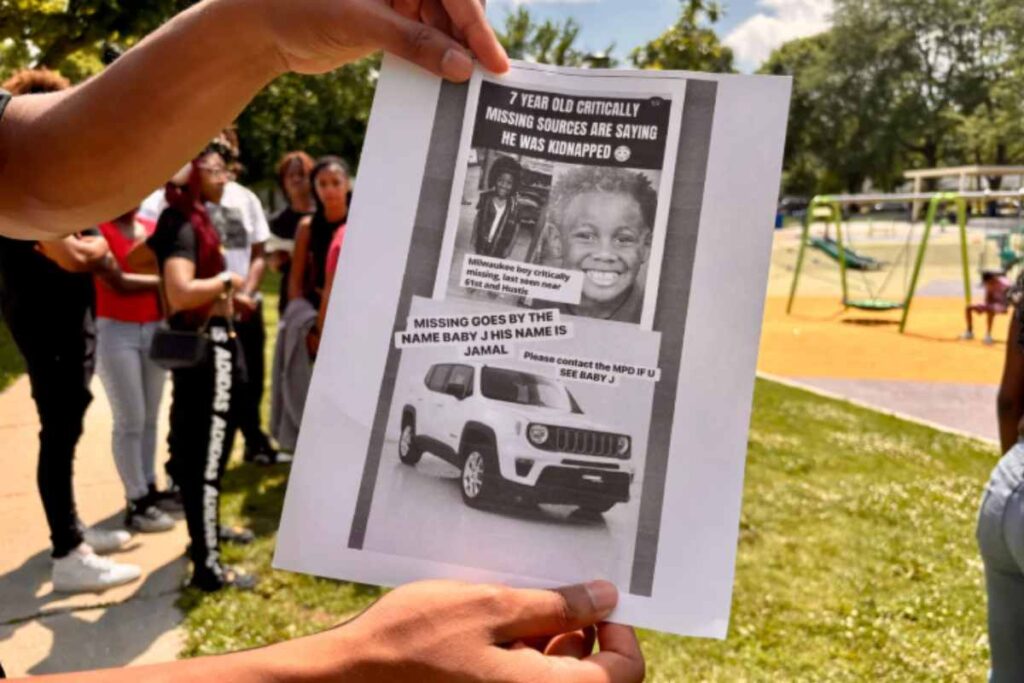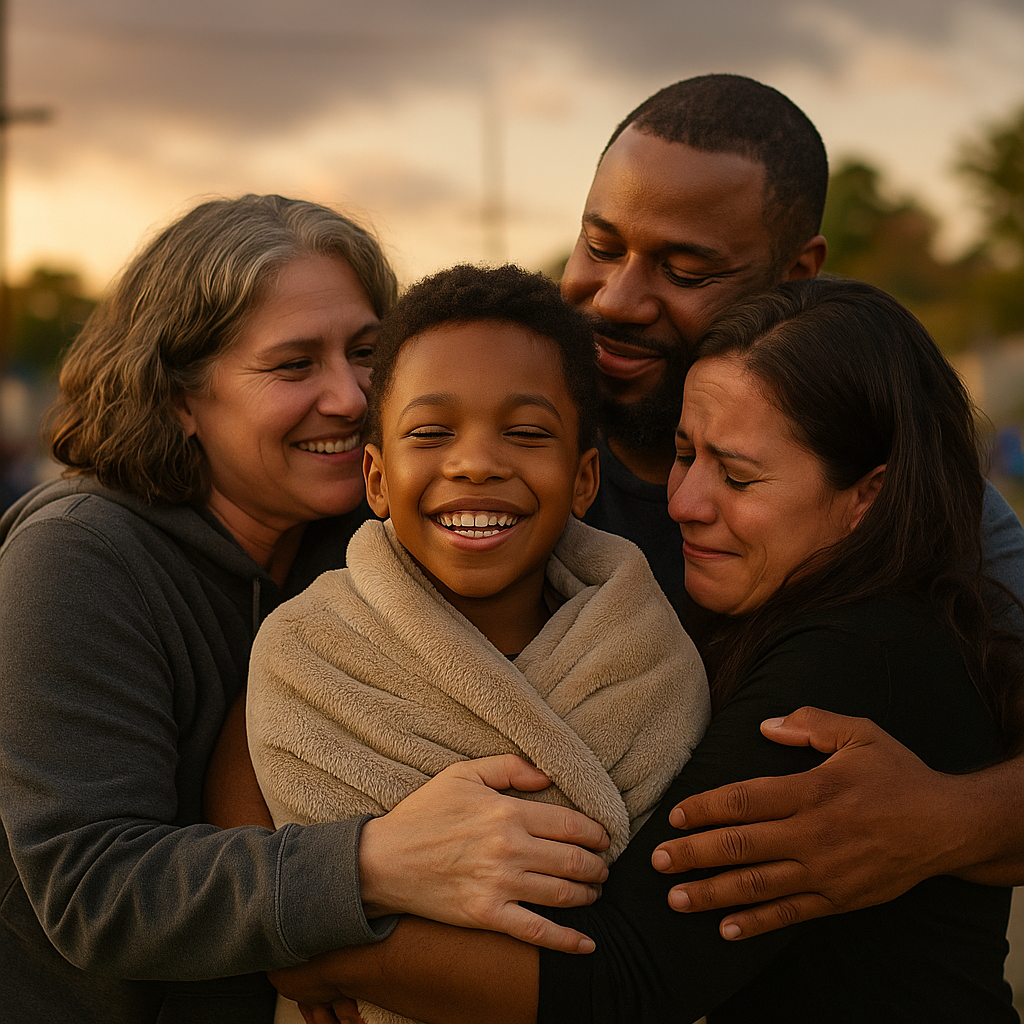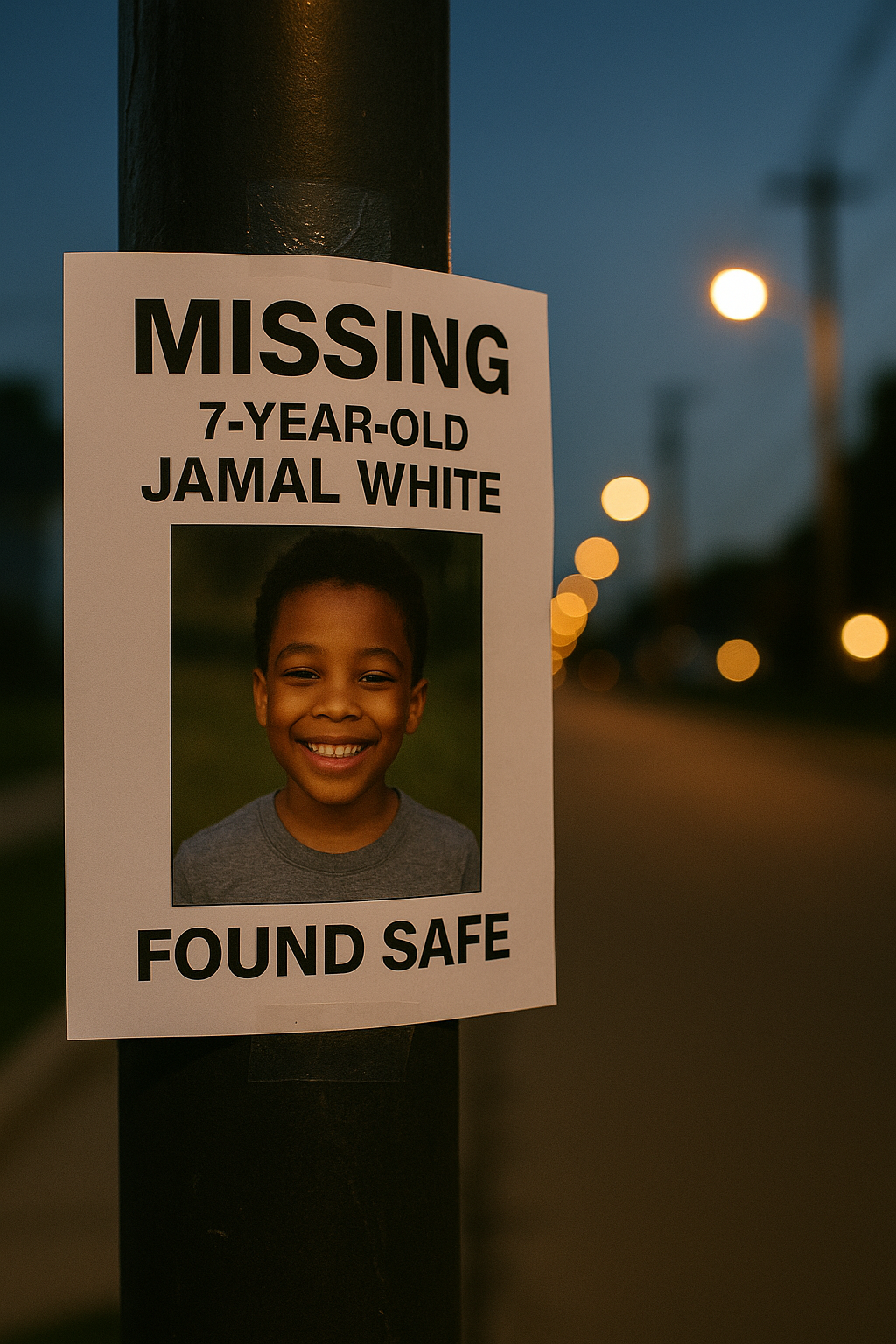When a Whole City Searches: How Milwaukee Found Jamal White

When a Whole City Searches: How Milwaukee Found Jamal White:- Late Friday evening, a disturbing event shook a Milwaukee neighborhood. Seven‑year‑old Jamal White was abducted at gunpoint close to his home. Immediately, a state‑wide Amber Alert mobilized police officers, community volunteers, and local media. Within less than 24 hours, the community joyfully reunited as Jamal was found safe. This powerful story reveals the strength of public cooperation, the quick work of law enforcement, and the emotional toll on one family—and an entire city.
This blog post explores every aspect of the case: the abduction, search efforts, law enforcement coordination, community response, emotional impact, and lessons learned. It highlights how tragedy became a moment of unity and hope.
The Abduction: What We Know
While playing near his house on Friday evening, Jamal White was reportedly taken at gunpoint around 7 p.m. A suspect approached him, seized him, and forced him into a white Jeep Renegade. The type of car and a handgun immediately raised alarm among neighbors who witnessed and heard screams.
Within minutes, the family notified police. This launched an Amber Alert targeting children abducted with a credible threat. An urgent broadcast went out statewide, along with door‑to‑door and social media notifications urging vigilance.
Law Enforcement Response
Milwaukee police sprang into action. They secured the scene around 61st and Hustis Street, collecting any nearby footage and interviewing witnesses. Detectives quickly described the suspect as a Black male wearing a black hoodie and mask, driving a small white SUV.
Officers expanded the search to neighboring counties and involved the Wisconsin Crime Information Bureau to track local cell phone and camera data. Patrols focused on key highways and surrounding green areas. An active travel route was traced south toward 39th and Lloyd in Milwaukee, where the boy would eventually be recovered.
Collaboration with neighboring police departments, state troopers, and dispatch centers proved essential. Units remained on alert for sightings fitting the suspect description. Amber Alert instructions also reminded citizens to call 911 with any information.
Community Action: Neighbors, Volunteers, and Social Media
From the moment Jamal was taken, community members sprang into action. Volunteers distributed flyers in doorways, rang bells, and shared information on local social media groups. As time passed without news, fear and concern mounted in neighborhoods.
Also, check Trump’s Jungle Trade Gamble: Why Deals Are Losing Their Power
A grieving cousin, hearing the Amber Alert, joined the search and tearfully stated, “He’s my blood. We needed to find him.” Others shared stories and prayers on discussions boards, even setting up temporary gathering points near 61st and Hustis.
Volunteers, including local fathers and mothers, organized small teams to walk through alleyways and wooded areas. “As a parent,” said one volunteer, “you don’t stop until you know your child is safe.” Within hours, the efforts of uniformed officers and civilian volunteers became indistinguishable.
Recovery: Relief Beyond Words
On Saturday evening, a breakthrough occurred. Officers descended on a house near 39th and Lloyd. The suspect was taken into custody nearby—and very importantly, Jamal was found alive and unharmed.
Reunion scenes unfolded in front of crime‑scene tape: family members rushed forward, clamoring to embrace the boy. One cousin later said through tears, “We just wanted to see him smile. That’s all we ever wanted.” The police confirmed Jamal would undergo a medical check and likely reunite fully with loved ones.
Emotional Impact: Trauma and Healing
Even when a child is found safe, the emotional aftermath lingers. Jamal likely experienced fear, confusion, and trauma while abducted. Even a short time in distress can leave lasting effects on a young mind.
The family went through profound anxiety as hours passed without contact. When they finally held Jamal, reactions ranged from tears to uncontainable sobs. Even the officers involved described feeling intense relief after making the recovery.
Psychologists say early care is critical. Jamal may now need counseling or therapy to process the event. His parents are likely by his side, ensuring he feels safe again. The community’s love and support can help restore a sense of normalcy.
Law Enforcement and Judicial Follow-Up
After an abduction involving a weapon, there are legal follow‑up steps. Officers will file charges against the suspect—likely including kidnapping with a firearm and related offenses. Evidence like vehicle registration, surveillance footage, and witness statements will be collected for prosecution.
The investigation continues into the suspect’s motive. Was it random? Was he targeting Jamal specifically? The answers will guide how this case is prosecuted. If convicted, the suspect could face very serious penalties under Wisconsin law.
Meanwhile, police departments will review this case to see how they can improve response times, information sharing, and interagency coordination.
Community Lessons: Preparation and Vigilance
This case re‑demonstrates several urgent lessons:
-
Rapid response saves lives: The Amber Alert’s quick distribution and clear information helped citizens stay on the lookout.
-
Community matters: Neighbors stepping in to search and share information amplified law enforcement power.
-
Trust in police: Families who trust authorities are more likely to notify them faster, leading to better outcomes.
-
Mental health support: Survivors need immediate and ongoing emotional care.
-
Prevention efforts: Parents should discuss general safety steps with children as early education.
Why This Story Resonates
This case hit home across Milwaukee and Wisconsin. Although a happy ending, the abduction reminded the public how vulnerable young children can be—even near home. It renewed calls for vigilance and collective protection.
Residents expressed gratitude to law enforcement and volunteers. Officials praised the “Amber Alert model” as proof it saves lives. It also showed that even in large, modern cities, personal connection and rapid action still matter.
What Happens Next for Jamal and the Neighborhood
Jamal will likely receive comprehensive medical and emotional evaluations. His family may arrange therapy sessions to address the aftershock. The school and healthcare providers will remain involved to follow his progress.
Officials also may hold a community meeting to discuss safety protocols and update residents. They often offer tips like keeping outdoor play visible, teaching children about safe strangers, and encouraging families to keep communication devices on.
Police may increase patrols in the neighborhood temporarily, partly as reassurance. Investigators may also reach out to neighbors who assisted with clues or sightings.
Wider Impact on Child Safety Awareness
This event sparked renewed conversation across Milwaukee County about children’s safety. Community groups are planning workshops on safety at bus stops, parks, and schools. They hope families learn how to create informal watch networks and report suspicious activity.
The success of this search also encouraged an emotional shift. Families who once kept to themselves are now more willing to assist neighbors. It reflects a mindset: protecting children is a shared responsibility.
Final Thoughts: Hope Restored, Lessons Learned
The return of Jamal White is a success story: a boy taken by force, found safe thanks to law enforcement and community spirit. It shows resilience, compassion, and urgency. It also reminds us that threats can appear anywhere—but we can come together to overcome them.
As Milwaukee moves forward, the neighborhood will remember the moment when strangers became a team. They stood together, fast, and determined. That unity brought a child home. And that’s what makes this story truly powerful.
follow Us on The Legal News Updates facebook for more updates








1 thought on “When a Whole City Searches: How Milwaukee Found Jamal White”